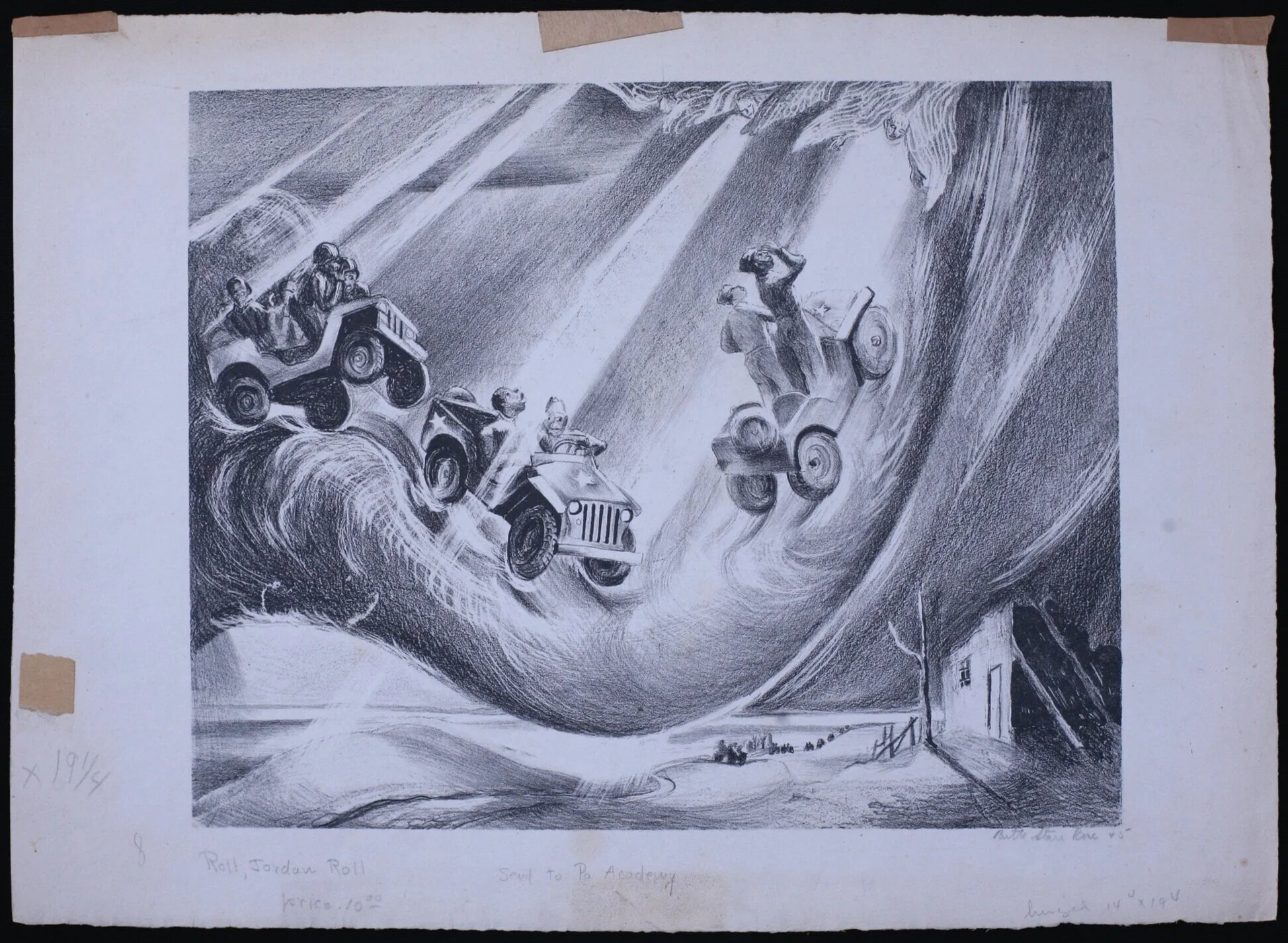Roll, Jordan, Roll
1945
Black-and-white lithograph
10” x 13” plate
Roll, Jordan, Roll honors brave African American men who suffered the ultimate consequence of war and gave their lives in battle. In this black-and-white lithograph, World War II soldiers are loaded into jeeps and propelled through the war-torn landscape in a military motorcade to face death directly. Angels salute them, and they, in turn, salute the angels as they are rewarded by a final ascension into Heaven.
Malvin Gray Johnson’s interpretation of this spiritual has a similar dynamic tension in its horizontal and diagonal motion. In Johnson’s canvas, a group of people huddle together in a primitive sailboat at twilight. They are clearly in flight as the central figure looks up toward the sky, while others row the boat. According to Porter, Johnson’s slowly rocking boat visualizes the rhythms of the spiritual chant. Its appropriately apocalyptic tone carries with it a barely cloaked militant message of survival. “Roll, Jordan, Roll” has a long and influential history dating back to eighteenth-century England. The song was originally introduced to America to indoctrinate enslaved people into Christianity, only to become their song of subversion. The Jordan River, now transposed to the Mississippi or Ohio rivers, was a powerful symbol of escape. The enslaved people of America saw themselves as the Israelites, who could live as free men and women once they crossed the river. The profound imagery of the song has made it an enduring gospel favorite. It reemerged in the national consciousness in Steve McQueen’s 2013 film adaptation of Solomon Northrup’s memoir, Twelve Years a Slave (1853).
